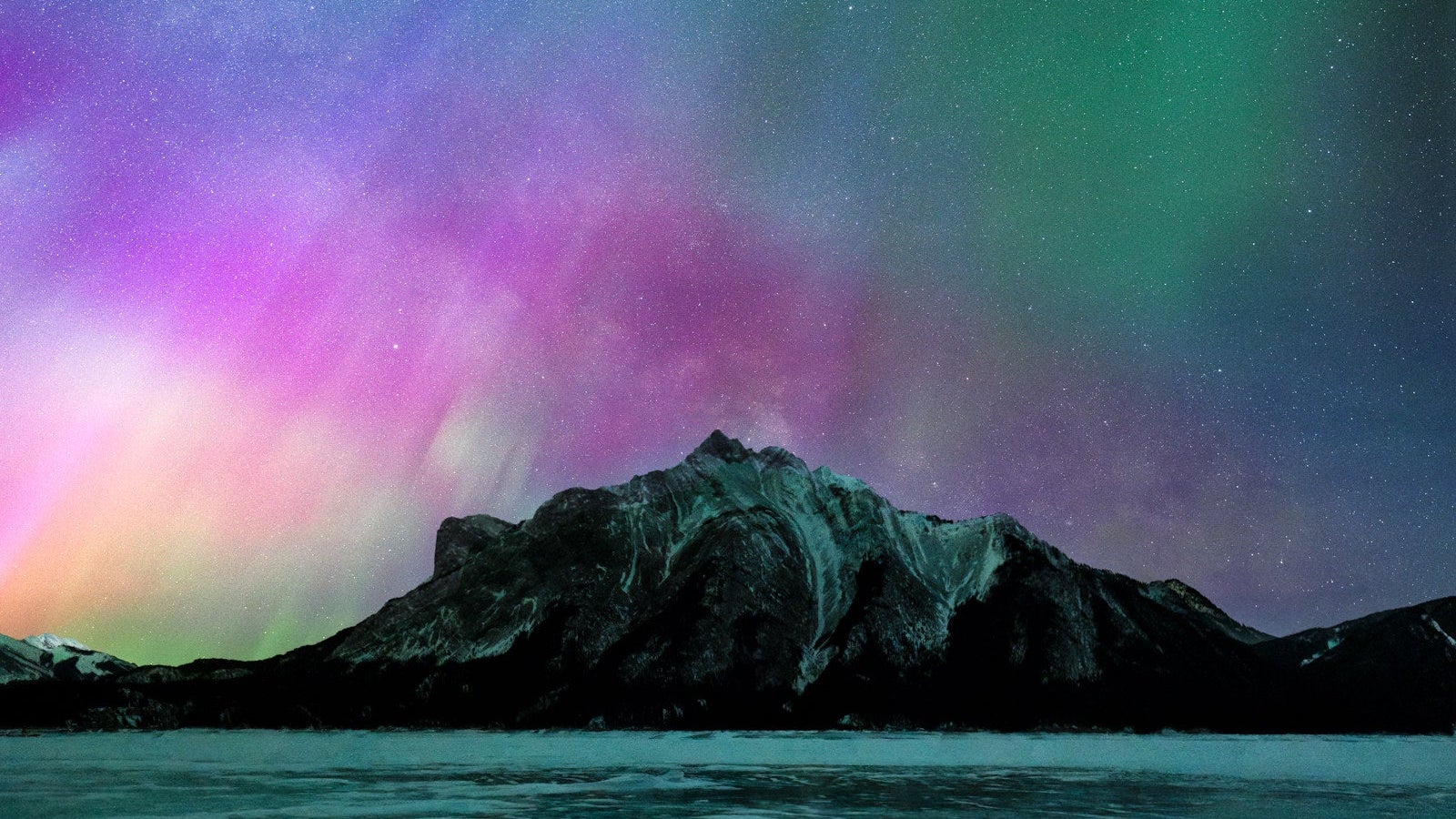As our sun approaches its peak activity in the current 11-year cycle the possibility for stunning aurora light shows is increasing. On May 10th and 11th, a series of coronal mass ejections originating from a cluster of active sunspots will collide with the Earth's atmosphere and create the possibility of dazzling aurora light shows that could extend southward from the polar region. Get your cameras ready. Check out our resources below to help you photograph the phenomenon and stay up to date on the solar activity at NOAA's space weather site: www.swpc.noaa.gov.

Photo by Rachel Jones Ross
Resources To Help You Photograph The Auroras
The pull of the night sky is built into Rachel Jones Ross' DNA. The Sony Brand Ambassador has created stunning astro-landscapes that incorporate the dancing light show, and you can learn more about how she does it firsthand in Pro Tips For Creating The Ultimate Dreamy Nightscapes.
Having a foundational understanding of night and astrophotography is going to help you properly capture the auroras. Photographer and Sony Brand Ambassador Stan Moniz (@stanmoniz) has been shooting and teaching astrophotography for years, and he’s simplified the process into some basics to help you get started. Learn more in Photo Fundamentals: Astro Exposure Basics Explained.
Photographer Jesús Garrido (@zonek_photography) focuses on two things through his imagery: wildlife and the northern lights. The gear he packs is imperative, and he chooses the Sony Alpha 1 because he says its dynamic range is crucial when shooting during the polar night. "Additionally, the ISO performance is excellent in dark situations or when capturing the Northern Lights. When they are moving really fast, the Alpha 1 enables me to use a high ISO and a short shutter speed to freeze their movement." See which lenses he pairs with the camera and more in What’s In My Bag: A Telephoto Zoom & An Ultra-Wide Prime For Photographing Arctic Wildlife & Northern Lights.

Photographer Jesús Garrido's kit for photographing the northern lights. Read more in What’s In My Bag: A Telephoto Zoom & An Ultra-Wide Prime For Photographing Arctic Wildlife & Northern Lights.
Aurora Inspiration From Other Photographers
There are many different ways to compose and capture dancing auroras in the night sky. Find some inspiration in these Behind The Shot articles from Sony shooters who have detailed their experience photographing the northern lights in the past.
Photographer Filip Hrebenda @filiphrebenda explains his time-blending technique, multi-step editing process, the Sony cameras and lenses he used in harsh, cold conditions, and how he composites new and compelling astro-landscape images in Behind The Shot: A Time Blending Technique To Make A Dramatic Aurora Image.
Sony Brand Ambassador Stevin Tuchiwsky (@stevint) takes an annual trip to capture the larch trees in the Canadian Rockies each fall, and one year that stands out to him in particular is when he was surprised with a dancing show of lights overhead. Read how he captured the aurora borealis with the Sony Alpha 7 II and Sony 16-35mm f/2.8 G Master in Behind The Shot: Capturing A Surprise Aurora With A Fast Zoom.
Sony Brand Ambassador Sapna Reddy (@sapnareddy) shares the story behind the fleeting image of a moonbow and the northern lights that she made with her Sony Alpha 7R IV and Sony 16-35mm f/2.8 G Master lens in Behind The Shot: A Northern Lights Moonbow.
Einar Jenssen (@polarjenssen) lives in Longyearbyen, the world's northernmost permanent settlement, located at the 78th parallel on the archipelago of Svalbard. He decided to incorporate some light painting into his aurora imagery, and you. can read more about how he did it in Behind The Shot: Painting The Sky With Auroras.



